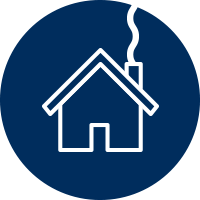Broadmeadows Forest Project



Location
Near Selkirk in the Scottish Borders, within in the Southern extent of the Traquair Forest. Highland Carbon has sold another large carbon project to the north of this Forest, which complements Broadmeadows.
Broadmeadows Forest itself enhances an Environmentally Sensitive Area that is also within the River Tweed Special Protection Area. By buffering waterflow into the Yarrow Water, it benefits the Yarrow Fishery located downstream. The Yarrow flows into Ettrick Water near to the Philiphaugh Salmon Viewing Centre and a Golden eagle eyrie.
Design
The project is designed as a rapid-growing climate forest, comprised of 576,000 trees, with a significant proportion of certified carbon units in time for Net Zero 2050. The multi-purpose woodland is designed for the 21st century, combining commercial forestry and native broadleaves. The new forest adds significantly to the established and establishing forest in the area. Significant zones of environmental interest have been left unplanted. The broadleaf and Scots pine sections mimic remnants of native forests found throughout the Scottish Borders. A lake has been instituted at the lower level of the project.
The project features carefully designed public access trails that are accessible by off-road wheel chairs. Also available for ramblers, mountain bikers and featuring benches located at look-out points.
By planting rapid growing conifers, such as Scots pine, Sitka spruce and Douglas fir. It achieves significant timely conversion from Pending Issuance Units (PIUs) to Certified Woodland Carbon Units (WCUs). Importantly, the design is organic with lobes of areas and with mixing of species in certain sections. The trees are spaced apart more broadly than in traditional tree plantations. So doing allows for greater benefits to flora and fauna.
Long-term Forest Management:
-
No intervention with broadleaves – expanding native forest
-
Selective thinning of diverse conifers (Douglas fir & Scots pine)
-
Staggered felling/replanting of commercial sections (Sitka spruce & Norway spruce)
-
Enhance the landscape through the creation of sensitively designed woodland linked to existing, mature woodland features and relating to the topography
-
Protect and enhance biodiversity values, valued habitats, and native woodlands
-
Combat climate change through carbon sequestration
-
Enhance public access and enjoyment
-
Protect watercourses
At a Glance: Broadmeadows Forest Project
Location
Selkirk, Scottish Borders
Offsetting Capacity
-
72,549 TCO2e
Status
-
Validated
Scale
-
576,000 trees on 225 Hectares
Forestry Features
-
Climate Forest
-
Permanent Broadleaf Areas
Tree Species
-
Broadleafs: alder, willow, grey willow, birch, aspen, hazel, juniper, rowan, bird cherry and birch.
-
Conifers: Scots pine, Norway spruce, Douglas fir and sitka spruce
Landscape Features
-
Within an Environmentally Sensitive Area
-
Benefits the Tweed River Special Area of Conservation
-
Complements other planting in Traquair Forest
Key Species to Benefit
-
Red squirrels, pine martens and crossbills
-
Golden eagles, osprey and hen harriers
-
Black grouse, red grouse and curlews
-
Water voles and dippers
-
Aquatic species such as salmon, trout and mussels
Sustainable Development Goals
-
Good Health and Wellbeing
-
Quality Education
-
Clean Water & Sanitation
-
Climate Action
-
Life on Land
-
Life Below Water
-
Partnerships for the Goals
Recognised Offsetting Framework
Woodland Carbon Code
Project Status
Validated
Recognised Offset Standards
Pending Issuance Units becoming Woodland Carbon Units




